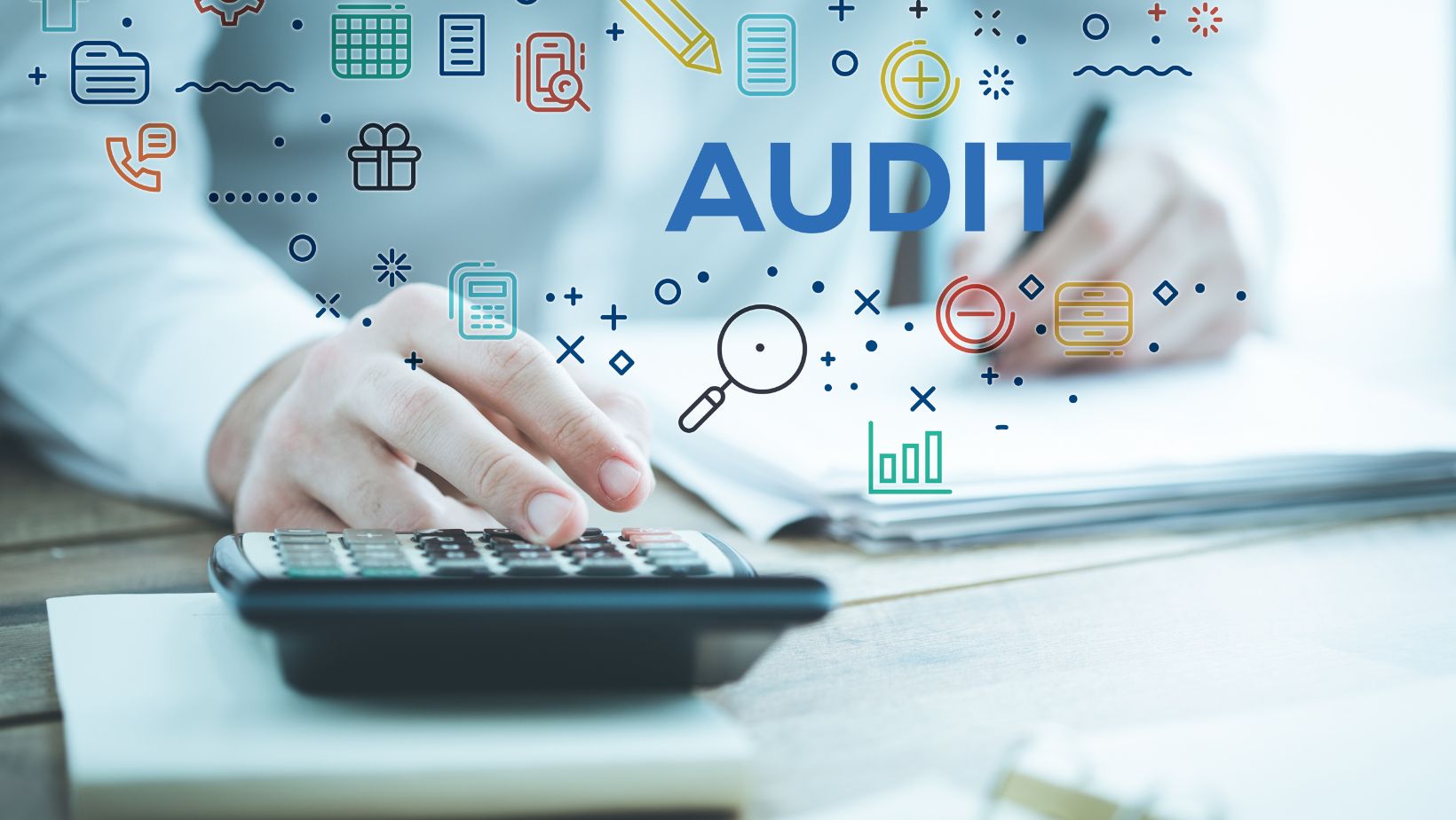In the modern world, where businesses and organizations rely heavily on technology, securing digital assets is more critical than ever. One of the most essential tools for managing users, computers, and other devices within a network is Active Directory (AD). Active Directory is a directory service developed by Microsoft for Windows domain networks. It provides a range of functionalities, including user and resource management, authentication, and security.
However, with its extensive use and the critical role it plays in network management, Active Directory is often a target for cyber-attacks. This makes it crucial for organizations to regularly perform Active Directory audits to ensure their network’s security. In this article, we will explore the importance of Active Directory audits, how they help maintain network security, and the best practices for conducting these audits.
Understanding Active Directory
Before delving into the importance of Active Directory audits, it is essential to understand what Active Directory is and how it functions within an organization. Active Directory is a database and set of services that connect users with the network resources they need to get their work done. It stores information about objects on the network and makes this information easy for administrators and users to find and use.
For instance, Active Directory can store information about user accounts, such as names, passwords, and permissions. It also manages access to resources like files, printers, and applications. Because of its central role in managing access and security within a network, Active Directory is a critical component of any organization’s IT infrastructure.
The Role of Active Directory in Network Security
Active Directory is more than just a directory service; it is a cornerstone of network security. By controlling access to resources and managing user accounts, AD plays a vital role in preventing unauthorized access to sensitive information. It also supports authentication and authorization processes, ensuring that only legitimate users can access specific network resources.
Given its importance, any compromise of Active Directory can have severe consequences for an organization’s security. If an attacker gains access to AD, they can potentially control the entire network, steal sensitive information, or disrupt operations. Therefore, maintaining the security of Active Directory is paramount, and one of the best ways to do this is through regular audits.
What is an Active Directory Audit?
An Active Directory audit is a thorough examination of the AD environment to identify security risks, ensure compliance with policies, and verify the integrity of the directory. The goal of an Active Directory audit is to uncover any potential vulnerabilities or misconfigurations that could be exploited by attackers. It involves reviewing various aspects of the AD environment, including user account management, access controls, group policies, and security settings.
By conducting regular Active Directory audits, organizations can detect and address security issues before they lead to a breach. Moreover, audits help ensure that the AD environment complies with industry standards and regulatory requirements, which is particularly important for organizations that handle sensitive data.
Why Active Directory Audits Are Important
Identifying Security Risks
One of the primary reasons for conducting an Active Directory audit is to identify security risks. Over time, as users are added, removed, or changed roles within an organization, the AD environment can become cluttered with outdated or misconfigured accounts and permissions. These issues can create security vulnerabilities that attackers can exploit.
For example, an inactive user account that has not been disabled or deleted could be used by an attacker to gain unauthorized access to the network. Similarly, excessive or inappropriate permissions granted to a user or group can lead to privilege escalation, where an attacker gains higher-level access than they should have.
An Active Directory audit helps identify these and other security risks, allowing administrators to take corrective actions before they can be exploited.
Ensuring Compliance with Policies and Regulations
Many organizations are required to comply with industry standards and regulations that mandate specific security practices. For instance, the Health Insurance Portability and Accountability Act (HIPAA) requires healthcare organizations to implement strict controls over access to patient data. Similarly, the General Data Protection Regulation (GDPR) mandates that organizations protect the personal data of European Union citizens.
An Active Directory audit helps ensure that the AD environment complies with these and other regulations. By reviewing access controls, security settings, and user management practices, an audit can verify that the organization is adhering to the required standards and taking appropriate measures to protect sensitive data.
Detecting Unauthorized Changes
Active Directory is a dynamic environment where changes are constantly being made. Users are added, permissions are modified, and new resources are configured regularly. While these changes are necessary for the smooth operation of the network, they can also introduce security risks if not properly managed.
Unauthorized changes to AD, such as the creation of new user accounts or modifications to group policies, can go unnoticed without regular auditing. An Active Directory audit allows administrators to detect any unauthorized changes that could compromise the security of the network. By identifying and investigating these changes, organizations can prevent potential security breaches and ensure that only authorized modifications are made.
Enhancing Incident Response
In the event of a security incident, having a clear understanding of the Active Directory environment is crucial for an effective response. An Active Directory audit provides valuable insights into the configuration and security of the AD environment, making it easier to identify the root cause of an incident and take appropriate action.

For example, if an organization experiences a data breach, an Active Directory audit can help determine how the attacker gained access to the network, which accounts were compromised, and what actions were taken. This information is essential for containing the breach, mitigating its impact, and preventing future incidents.
Improving Operational Efficiency
While security is the primary focus of an Active Directory audit, it can also improve the overall efficiency of the AD environment. By identifying and addressing misconfigurations, redundant accounts, and other issues, an audit can streamline the management of AD and reduce the administrative burden on IT staff.
For example, an audit might reveal that certain group policies are not being applied correctly, leading to inconsistent security settings across the network. By correcting these issues, administrators can ensure that policies are applied uniformly, improving the overall security and efficiency of the network.
Conducting an Active Directory Audit
Now that we have established the importance of Active Directory audits let’s explore how to conduct one effectively. A comprehensive Active Directory audit involves several steps, each of which is crucial for ensuring the security and integrity of the AD environment.
Planning the Audit
The first step in conducting an Active Directory audit is to plan the audit process. This involves defining the scope of the audit, identifying the key areas to be examined, and determining the resources required. The scope of the audit may vary depending on the size of the organization, the complexity of the AD environment, and the specific security concerns.
During the planning phase, it is also important to establish clear objectives for the audit. For example, the audit may aim to identify security vulnerabilities, ensure compliance with regulations, or detect unauthorized changes. Having clear objectives will guide the audit process and ensure that it addresses the organization’s specific needs.
Gathering Information
Once the audit plan is in place, the next step is to gather information about the Active Directory environment. This includes collecting data on user accounts, groups, permissions, group policies, and security settings. There are various tools available that can assist in gathering this information, including built-in Windows utilities and third-party software.
During this phase, it is important to collect as much relevant data as possible. This will provide a comprehensive view of the AD environment and help identify any potential issues. Key areas to focus on include:
- User Accounts: Review all user accounts to ensure they are active, properly configured, and have appropriate permissions.
- Groups and Permissions: Examine group memberships and permissions to ensure that access controls are correctly configured and follow the principle of least privilege.
- Group Policies: Review group policies to ensure they are correctly applied and aligned with the organization’s security policies.
- Security Settings: Examine security settings, such as password policies and account lockout settings, to ensure they meet industry standards and best practices.
Analyzing the Data
After gathering the necessary information, the next step is to analyze the data to identify potential security risks, misconfigurations, and areas of non-compliance. This analysis should focus on identifying any issues that could compromise the security of the Active Directory environment.
For example, the analysis might reveal that certain user accounts have excessive permissions, increasing the risk of privilege escalation. It might also uncover that certain group policies are not being applied as intended, leading to inconsistent security settings across the network.
By thoroughly analyzing the data, administrators can identify the most critical issues and prioritize them for remediation.
Remediation and Implementation
Once the analysis is complete, the next step is to implement remediation measures to address the identified issues. This may involve making changes to user accounts, adjusting group memberships and permissions, updating group policies, and modifying security settings.
It is important to approach remediation systematically, prioritizing the most critical issues first. For example, if the audit reveals that an inactive user account with administrative privileges has not been disabled, this should be addressed immediately to prevent unauthorized access.
In addition to making technical changes, it may also be necessary to update policies and procedures to prevent similar issues from arising in the future. For example, organizations might implement stricter controls over account management or require regular reviews of group memberships and permissions.
Documentation and Reporting
After the remediation measures have been implemented, it is important to document the findings of the audit and the actions taken to address them. This documentation should include a detailed report of the audit process, the issues identified, and the steps taken to remediate them.
The report should also include recommendations for ongoing monitoring and future audits. For example, the audit might recommend that certain aspects of the Active Directory environment, such as user account management or group policy application, be reviewed on a regular basis.
By documenting the audit process and its findings, organizations can ensure that they have a clear record of their efforts to secure the Active Directory environment. This documentation can also be valuable for demonstrating compliance with regulatory requirements and industry standards.
Ideal Practices for Active Directory Audits
To maximize the effectiveness of an Active Directory audit, it is important to follow best practices that ensure a thorough and accurate assessment of the AD environment. Here are some key best practices to consider:
Conduct Regular Audits
One of the most important best practices for Active Directory audits is to conduct them regularly. While a single audit can provide valuable insights into the security of the AD environment, regular audits are necessary to maintain ongoing security.
The frequency of audits may vary depending on the size and complexity of the organization, as well as its specific security needs. However, it is generally recommended that organizations conduct Active Directory audits at least once a year. In some cases, more frequent audits may be necessary, especially if there have been significant changes to the AD environment or if the organization faces a high level of risk.
Use Automated Tools
Given the complexity of Active Directory environments, manually conducting an audit can be a time-consuming and error-prone process. To streamline the audit process and ensure accuracy, it is recommended to use automated tools that can assist with data collection, analysis, and reporting.

There are a variety of tools available that are specifically designed for Active Directory auditing. These tools can automate many aspects of the audit process, making it easier to identify security risks, detect unauthorized changes, and ensure compliance with policies and regulations.
For example, automated tools can generate reports on user accounts, group memberships, and permissions, allowing administrators to quickly identify any issues that need to be addressed. They can also monitor the AD environment in real time, providing alerts when suspicious activity is detected.
Involve Key Stakeholders
An Active Directory audit is not just the responsibility of the IT department; it should involve key stakeholders from across the organization. This includes security professionals, compliance officers, and management, all of whom have a vested interest in the security and integrity of the AD environment.
Involving key stakeholders in the audit process ensures that the audit addresses the organization’s specific security needs and compliance requirements. It also helps to ensure that the findings of the audit are taken seriously and that appropriate actions are taken to address any identified issues.
For example, if the audit reveals that certain user accounts have excessive permissions, involving management in the remediation process can help ensure that the necessary changes are made and that appropriate policies are put in place to prevent similar issues in the future.
Focus on High-Risk Areas
While it is important to conduct a comprehensive audit of the entire Active Directory environment, it is also important to focus on high-risk areas that are more likely to be targeted by attackers. These high-risk areas may include:
- Administrator Accounts: Administrator accounts have elevated privileges and are often targeted by attackers seeking to gain control of the network. The audit should focus on ensuring that these accounts are properly secured and that access is limited to authorized users.
- Inactive User Accounts: Inactive user accounts are a common target for attackers, who can use them to gain unauthorized access to the network. The audit should identify and disable or delete any inactive accounts to reduce this risk.
- Group Policies: Group policies play a critical role in managing security settings across the network. The audit should ensure that group policies are correctly applied and that they align with the organization’s security policies.
- Access Controls: Access controls determine who can access specific resources within the network. The audit should focus on ensuring that access controls follow the principle of least privilege, meaning that users have only the access they need to perform their jobs.
By focusing on these and other high-risk areas, the audit can help identify and address the most critical security issues in the Active Directory environment.
Ensure Ongoing Monitoring
An Active Directory audit provides a snapshot of the AD environment at a specific point in time. However, given the dynamic nature of AD, ongoing monitoring is necessary to maintain security over the long term.
Ongoing monitoring involves continuously tracking changes to the Active Directory environment, such as the creation of new user accounts, modifications to group policies, and changes to security settings. By monitoring these changes in real time, organizations can quickly detect and respond to any unauthorized activity that could compromise the security of the network.
There are various tools available that can assist with ongoing monitoring of Active Directory. These tools can provide alerts when suspicious activity is detected, allowing administrators to take immediate action to prevent a security breach.
Conclusion
Active Directory is a critical component of any organization’s IT infrastructure, playing a central role in managing users, resources, and security within a network. However, given its importance, it is also a prime target for cyber-attacks. To ensure the security and integrity of the Active Directory environment, organizations must conduct regular Active Directory audits.
An Active Directory audit helps identify security risks, ensure compliance with policies and regulations, detect unauthorized changes, and enhance incident response capabilities. By following best practices, such as conducting regular audits, using automated tools, involving key stakeholders, focusing on high-risk areas, and ensuring ongoing monitoring, organizations can maintain the security of their Active Directory environment and protect their network from potential threats.
In today’s digital landscape, where cyber threats are constantly evolving, the importance of Active Directory audits cannot be overstated. By making Active Directory audits a regular part of their security strategy, organizations can proactively address vulnerabilities, maintain compliance, and keep their networks secure.

